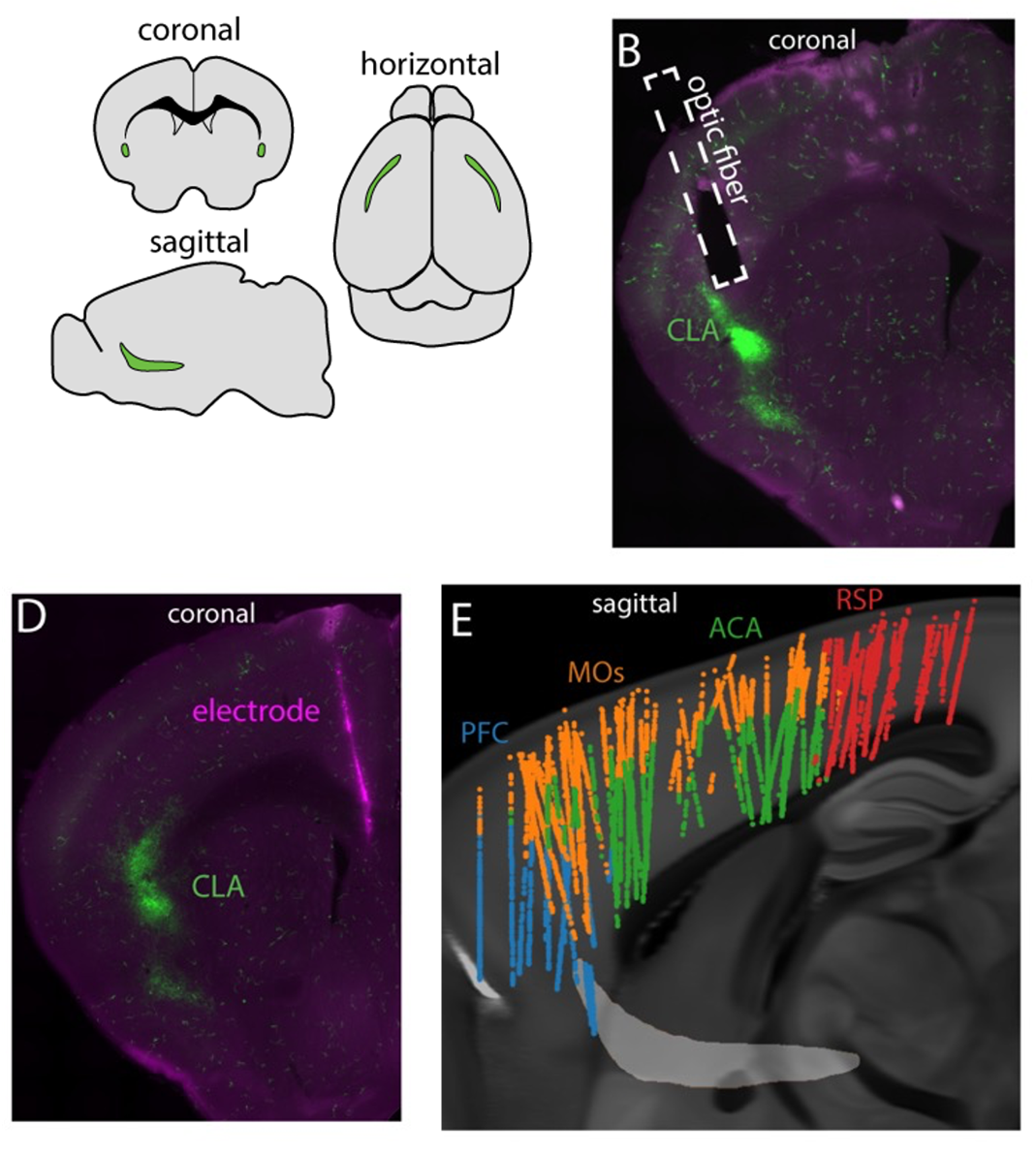Examine the Role of the Claustrum and its Cell Types, Connections, and Function and their Relationship to the Neuronal Correlates of Consciousness

Overview:
This project aimed to better understand the claustrum and its cell types in relationship to consciousness in the mammalian brain.
Abstract:
The claustrum is a subcortical brain structure present in all mammals with remarkably extensive and bi-directional connectivity with the neocortex and an elusive function. Due to this unusual connectivity, it is theorized to be involved in consciousness. To understand its function, it is important to observe claustrum neurons in action by tracking their electrical activity as well as by turning claustrum neurons on or off in a controlled way and observing the result of such a perturbation on the firing properties of the cortex, and on the behavior of mice.
Our neuroanatomical and neurophysiological work in the laboratory mouse indicates that the claustrum can have both excitatory and inhibitory effects on the cortex, and this varies by layer and cell type. This suggests claustrum could implement a winner-take-all operation whereby cortical neurons relay their information to the claustrum and this activity competes, in an inhibitory manner, such that only the strongest activity survives within the claustrum. The output of the claustrum is sent back to cortical targets, inhibiting all but one of the afferent cortical activity patterns. Such a circuit could be important for attention and salience processing during cognitively demanding conditions.

Broader Impact:
The claustrum has been suggested to be a conductor of the symphony of cortical activity. Revealing the mechanisms by which the claustrum functions will have important ramifications for understanding attention and consciousness in the human brain and could inform disorders of consciousness.